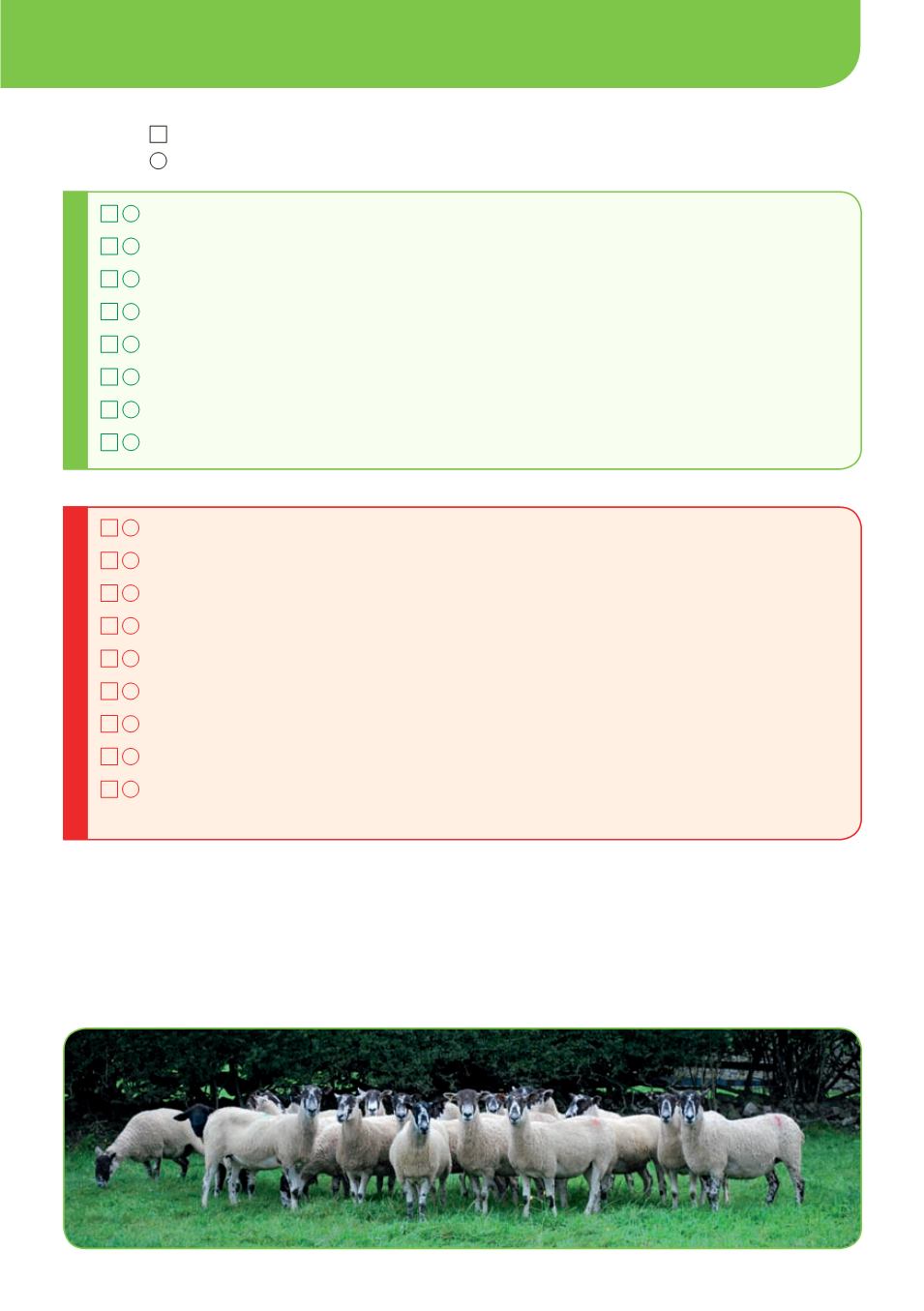
HIGHER RISK
LOWER RISK
11
Please tick
boxes relevant to your current farm practice.
Please tick boxes if there are any lower risk practices you could adopt.
�Animals quarantined for at least three weeks
�
�Incoming breeding ewes segregated until after lambing
�
�Quarantined stock separated from other livestock by at least a three metre gap
�
�Stock yarded on arrival
�
�Stock closely inspected on arrival
�
�Quarantine treatments administered immediately after arrival
�
�Separate equipment used for quarantine stock
�
�Protective clothing changed or disinfected after working with quarantined stock
�Animals not quarantined at all
�
�Animals quarantined for less than three weeks
�
�Incoming breeding ewes not segregated
�
�Quarantined stock can have nose to nose contact with other stock
�
�Purchased stock put straight onto pasture
�
�Purchased stock not subjected to close inspection
�
�Purchased stock do not receive quarantine treatments
�
�Equipment moved from quarantine pens without being disinfected
�
�Protective clothing is not changed or disinfected after working
with quarantined stock
Quarantine period
The quarantine period for all purchased or returning sheep should be at least three weeks. Some
diseases will require a much longer quarantine period and specific advice should be sought from your vet.
Segregate incoming breeding ewes from the main flock until after lambing to reduce risks from infectious
abortion, and when possible, lamb this group last.
Quarantine routines


